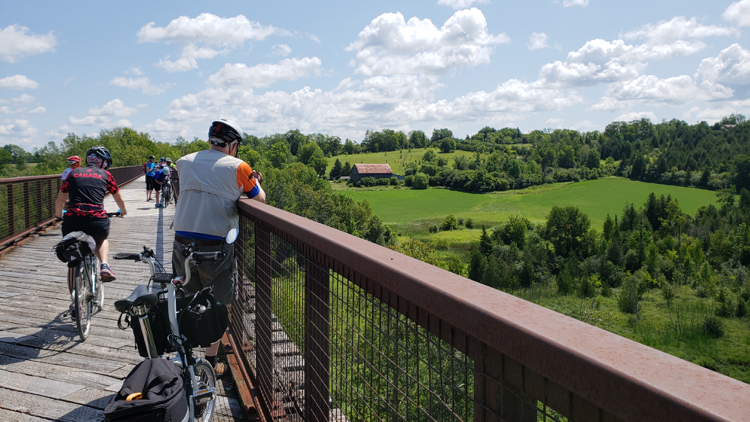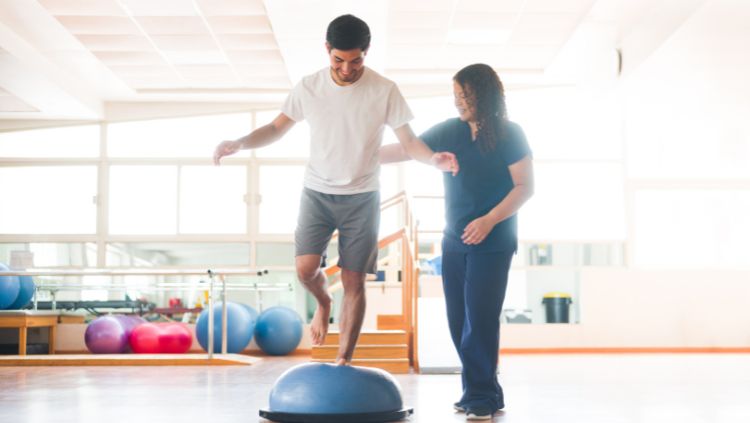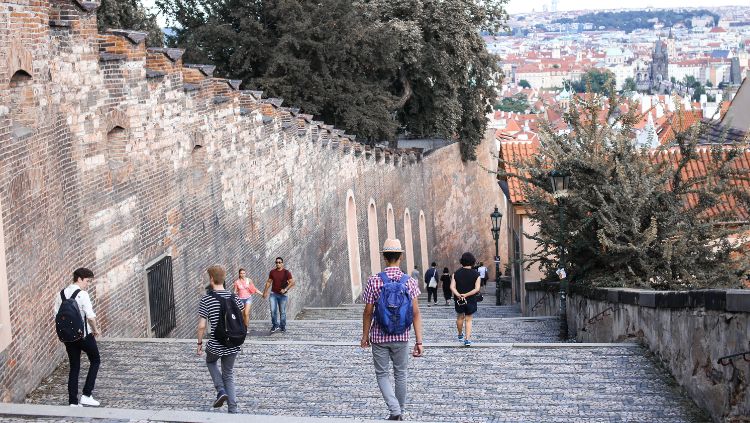Travel tends to demand more of one physically than life at home. Just walking to your gate at some airports can feel like a marathon. This post aims to provide some basic advice to help you get fit for travel so you can go with the confidence that you will be able to handle the challenges and terrain your journeys bring.
The first piece of advice comes from a book my doctor recommended a few years back. Younger Next Year recommends being active at least six days a week. I turned to walking more, and for the most part, I’ve stuck to it.
Actually, I’ve stuck to being active six days a week. After that first winter of walking, I learned that it was definitely not the only thing I should do. In early spring, when I tried to lift my leg over the seat of my bike, I discovered that I couldn’t do it. My flexibility had been seriously compromised by doing too much of one activity.
I then started cycling more and swimming some days instead of walking. A few years on, I realized that simply being active is not enough; it’s also important to focus on strength, flexibility, balance, and agility.
So, here goes. With the help of my son, who is a trainer, you will find some advice below for getting fit for safe senior travel.

The Basics For Seniors Getting Fit for Travel
I don’t think I’m unusual in that I feel younger and more fit than I really am. Consequently, I usually want to take a trip that is a bit beyond my fitness level. That’s where fitness training for travel comes in.
Before giving you the tips below, I want to make it clear that I recommend working with a qualified trainer while heeding the advice of your doctor. Doing so will prevent injury and yield better results.
- Make training part of everyday life. Building strength and endurance is not something you cram for. If you’re training for a specific trip, start early. It’s better if you make exercise and training a habit that is done every day.
- Choose fun over obligation. You are more likely to stick to a habit if you enjoy what you’re doing. I take two dance-based classes at the YMCA that focus on both strength and endurance. They are my fun activities. I also work out with my son once a week, concentrating on strength. It’s important but definitely not as much fun.
- Rest between strength-building sets. The older you are, the longer you need to rest between sets to avoid lactic acid pain and stiffness the next day. I rest at least 2 minutes between sets and I’m amazed that, while I have built muscle and strength, I have never been sore from it. A rep is a count of the times that you do the exercise. You do the reps in groups of sets. For example, you might do eight squats (reps) in a set. Rest at least 2 – 3 minutes between sets.
- Build strength in all muscles, not just the large ones. The body likes to find the easiest way to do things, and that often means relying on the large muscles and not using all the smaller ones that support them. Following this logic has had an amazing impact on my back. I no longer have back pain. Doing squats properly so that my gluteus maximus, medius, and minimus are engaged, I have, over time, eliminated a sciatica problem.
- Focus on strength: Resistance training has many benefits, including maintaining bone density. By focusing on strength as part of getting fit for travel, you not only mitigate the risk of falling but you are also less likely to be injured in a fall. I use resistance bands as they are cheap, effective, and don’t take up much room. I would shop for these in person rather than online. At a gym, choose free weights over machines as they tend to demand your body to use a wider range of muscles.
- Focus on balance. Strength also improves balance and our ability to regain our balance should we lose it. Particularly important for balance are our ankles. There are seven bones in your ankles that are stacked asymmetrically. Without the muscles in your ankles, they would collapse. Focus on exercises to strengthen ankles. A Bosu ball is amazing for developing and challenging your balance.
- Focus on range of motion. Having a good range of motion in all your joints is another way to protect yourself as you travel. Yoga is one of the best ways to improve range of motion as it builds strength and flexibility at the same time. As I understand it, muscle strength is essential for mobility.
- Focus on endurance. This comes fourth in the list of what to focus on when fitness training for travel, yet it is all that I focused on when getting into fitness more rigorously in the first place. Walking, swimming, badminton, or pickleball will increase your endurance. For me, it’s the dance-based exercise at the gym, as well as walking, swimming, and skating, depending on the season.
Train according to the trip you’re going to take. For a walking trip in France where the terrain was flat, I focused on distance and not hills when training. If your demanding trip is more about getting off the couch for short jaunts, you may have to do short walks and more stairs, possibly taking them two at a time given that bus steps tend to be higher than a typical staircase.

Keep up to date on all things solo travel–sign up for our free newsletter.
Last updated: 31st October, 2024
